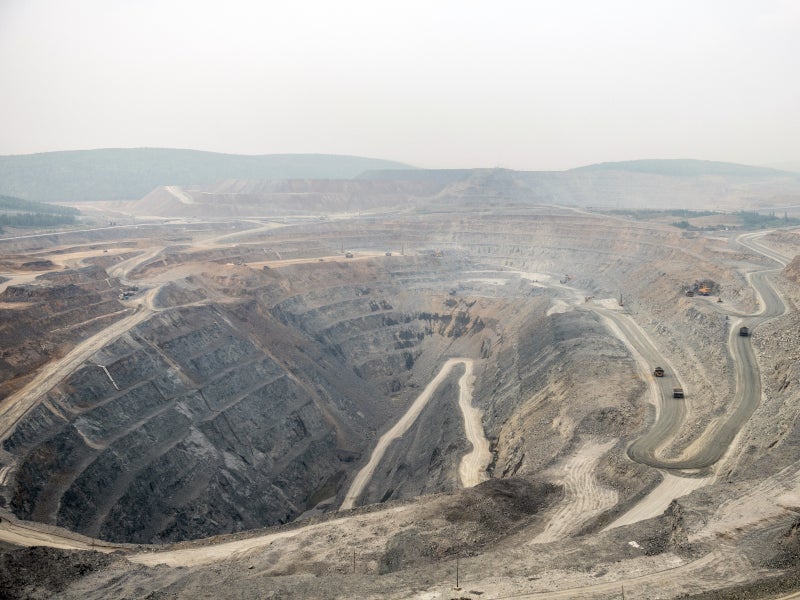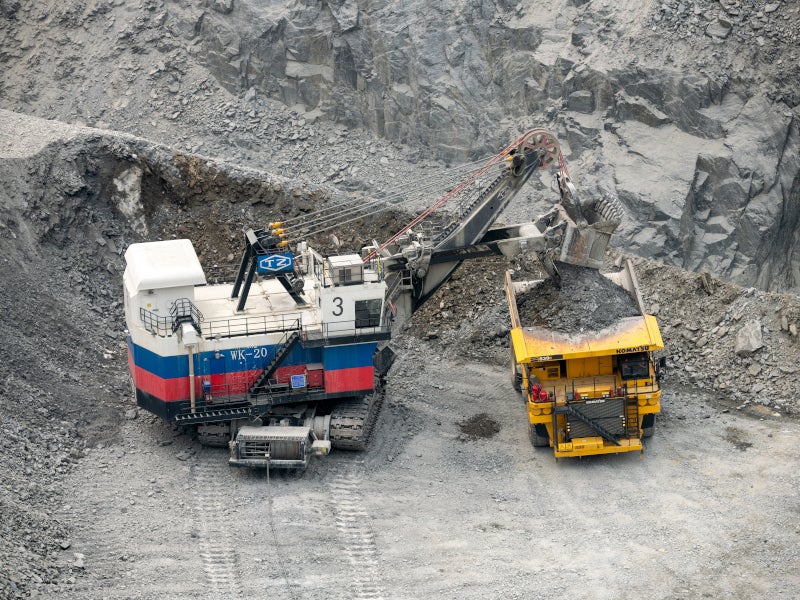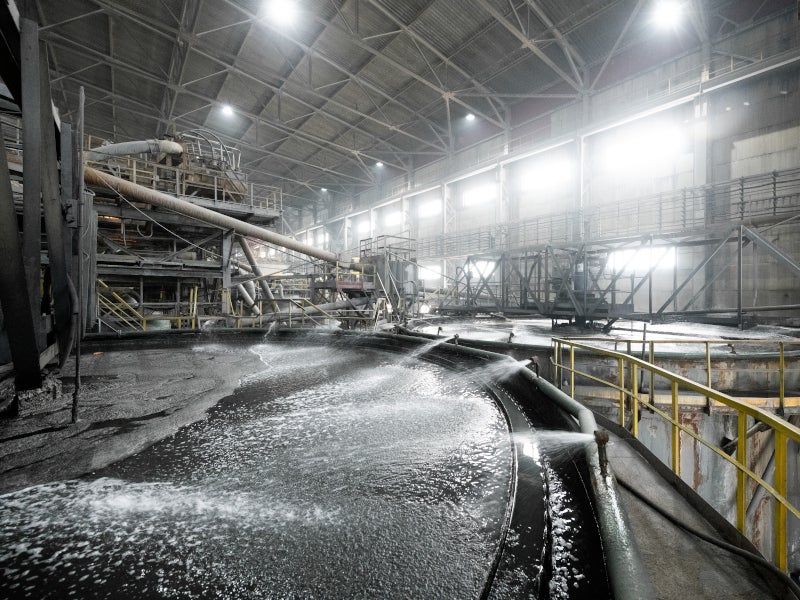Blagodatnoye is an open-pit gold mine development located in Krasnoyarsk Krai, Russia. It is one of the largest ore processing plants in Russia’s gold mining sector.
It is owned and operated by Polyus, which is Russia’s biggest and the world’s fourth-biggest gold producer.
Blagodatnoye is Polyus’ third-biggest mine, located approximately 25km from the company’s flagship operation Olimpiada gold mine, which entered production in 1996.
Commissioned in July 2010, the mine has resources left to be mined from the open pit for 18 years, until 2034. The mine produced 430.3koz of gold in 2022.
A final investment decision (FID) was reached in December 2020 for the construction of a new mill named Mill-5, at the Blagodatnoye complex.
Blagodatnoye gold mine location
The Blagodatnoye gold mine is located in the Severo-Yeniseysky District of Krasnoyarsk Krai, Russia. The site is located 58km away from the Severo-Yeniseysk airport and 300km from Lesosibirsk railway station.
Blagodatnoye and the nearby Titimukhta mines are located 25km and 9km respectively from the Olimpiada mine. The three mines are strategically connected by roads with river stations on the Yenisei and Angara rivers.
Blagodatnoye mine geology and mineralisation
The Blagodatnoye ore is characterised by quartz-micaceous schists along with impregnated and vein-impregnated sulphide mineralisation.
The gold deposit comprises early and late-Proterozoic meta-sediments intruded by granitoid bodies. The deposit was formed because of the hydrothermal activity and mutation induced by elongated zones of faulted and crushed rock.
Gold mineralisation in the deposit occurs within the shear zone, defined by a strike length of 4km and an average thickness ranging between 120m and 140m. It also involves intense folding related to shear zones trending north-west.
The gold mineralisation occurs in silica, chlorite, and sericite alteration zones, with the main gold forms in the ores being free, connected with barren minerals, and in aggregates. The majority of the gold exists as disseminated native gold, while the rest is associated with sulphide minerals.
Blagodatnoye gold mine reserves
Blagodatnoye’s proven and probable reserves are estimated to be 268 million tons (mt), grading 1.3g/t of gold and a total of 10.8 million ounces (moz) in contained gold as of December 2022.
Mining method at Blagodatnoye
The Blagodatnoye gold mine employs a conventional shovel-and-truck open-pit method, with low-grade ore stockpiled at the surface.
The gold mine has two pits in operation, including a smaller northern pit and a larger and primary southern pit.
Excavation is performed on 10m working benches with 20m final batters developed through pre-split blasting using water-resistant emulsion products. The diameters of the blasting drill holes are 152mm, 165mm, 215mm, and 250mm.
In-pit reverse circulation (RC)-drilling is conducted on a 20m × 10m pattern with 60m angled drill holes and 2.5m sample intervals.
The run-of-mine (ROM) ore is fed to the processing plant, whereas the low-grade ore is stockpiled for processing at a later stage by heap leaching. Excess high-grade ore is stockpiled for re-handling for supply requirements during mining. Waste and overburden are sent to one of the two designated waste dumps.
Mining is performed by hydraulic excavators, which load onto rigid-body haul trucks. It includes two EKG-10 face shovels with a bucket capacity of 10m³ each, two Komatsu PC-1250 excavators with a bucket capacity of 5m³, and two Komatsu PC-3000.
Trucks used at the mine site include BelAZ 7540 (30t), Terex MT3300 (136t), CAT 785 (136t), Komatsu 830E (220t), and CAT 777 (90t).
Processing at Blagodatnoye gold mine
Ore at the Blagodatnoye mine is processed at plant #4 located onsite using conventional crushing, grinding, gravity floatation, and cyanide leach technology.
Commissioned in 2009, the plant #4 achieved a nominal capacity of 6.0mtpa in 2010, followed by expansion to 7.4mtpa in 2015 and further to 9.0mtpa in 2019.
The ROM ore is fed to the primary crushing circuit and crushed to a size of -400mm using a toothed roll crusher.
The thickened flotation concentrate in the plant is leached with cyanide and introduced to activated carbon to adsorb gold from the leach solution. Stripping and electrowinning are used to recover the gold.
Gold-rich fraction is removed from material exiting the semi-autogenous grinding (SAG) mills by Knelson centrifugal concentrators. The intensive leach reactors (ILRs) dissolve gold, which undergoes smelting and electrowinning to produce doré.
The leach residue undergoes detoxification, followed by filtration. The filer cake is dry stacked in a place where solution drainage is reported to the tailings storage facility (TSF).
Mill 5, an addition to the new processing facility, is being constructed with a processing capacity of 8.3mtpa of ore.
Mill 5 will introduce an in-pit crushing and conveying (IPCC) system. The IPCC equipment will include a semi-mobile crushing station featuring the TSUV Gyratory Crusher, an apron feeder, and a 1.6km overland conveyor.
Mill-5 will be launched in 2025 and is anticipated to contribute an additional 390koz of gold volumes.
Blagodatnoye mine infrastructure
The Blagodatnoye open-pit mine receives power from three stationary 6kV high-voltage lines from the Blagodatninskaya substation.
The Olimpiada-Blagodatnoye complex receives electricity from two coal-fired plants and a diesel-fired plant, as well as from the national grid.
Process water for the complex is supplied by recycling reclaimed water from the Vostochniy pit at the Olimpiada open-pit mine, and the TSFs.
Olimpiada, Blagodatnoye, and Titimukhta mines share accommodation and support facilities, along with equipment and personnel.
Contractors involved
SRK prepared a series of models to develop slope designs and water management strategies for the Blagodatnoye gold mine.
Anddes assisted in the development of a geotechnical laboratory and leaching platform. It also performed the selection and audit of the geotechnical laboratory and assisted in developing criteria for the leaching design.
Hatch was selected to help increase production and efficiency at the mine.
FLSmidth, a mining technology and services provider, was awarded the contract for IPCC equipment supply for the Blagodatnoye gold mine in December 2021.




